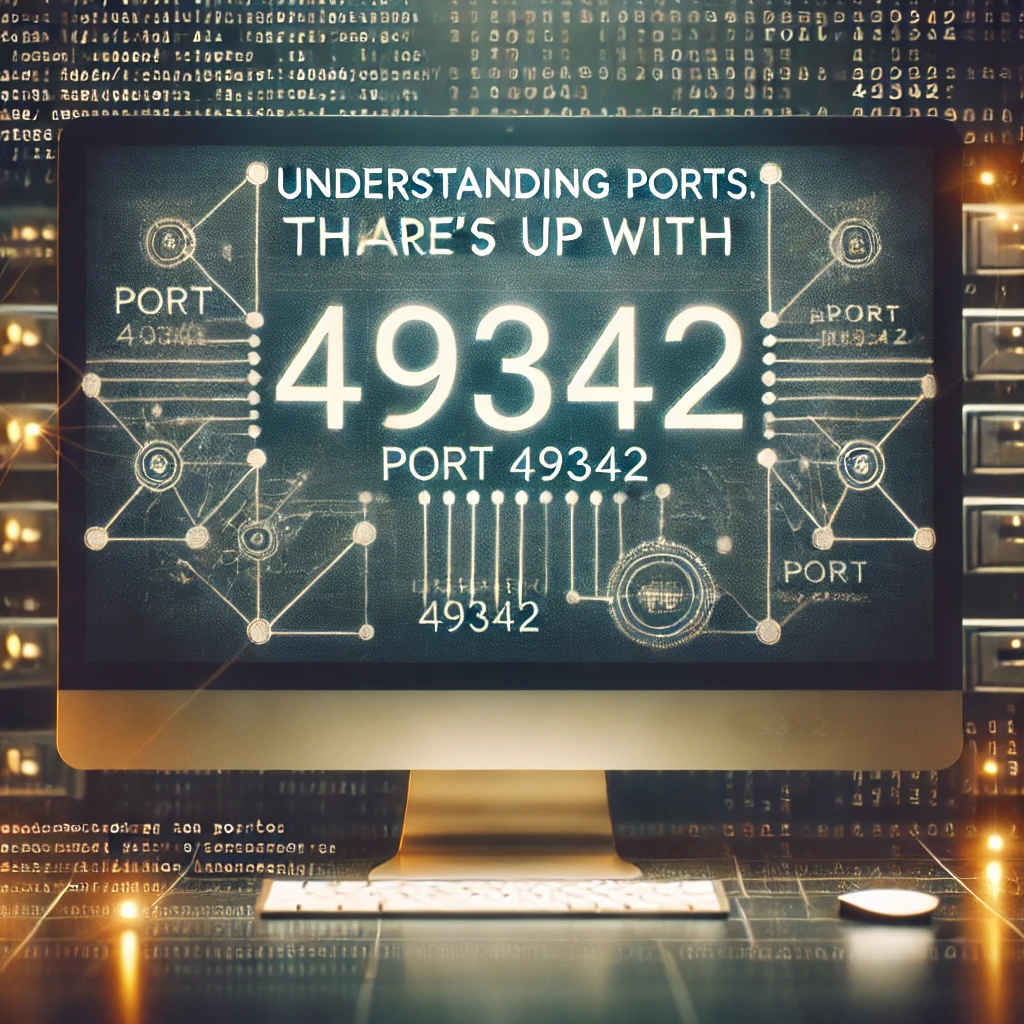In the realm of networking and computer systems, there are few things as fundamentally important, yet easily misunderstood, as IP addresses and ports. One such IP address is 127.0.0.1, commonly referred to as “localhost.” It might not sound particularly exciting, but this simple number plays a crucial role in everything from web development to troubleshooting network issues.
And when paired with a port number, like 49342, this combination can unlock the secrets of local network communication and testing. In this post, we’re going to explore the significance of 127.0.0.1:49342 and provide some practical tips for fixing common issues you may encounter when working with this IP and port.
Let’s dive into the fascinating world of localhost and why it’s so important in modern networking, along with how to troubleshoot common problems.
Table of Contents
1. What is 127.0.0.1 and Why is It Important?
2. Understanding Ports: What’s Up with 49342?
3. Common Uses of 127.0.0.1:49342
4. How Localhost Testing Works in Web Development
5. Common Issues and Troubleshooting Tips for 127.0.0.1:49342
6. FAQs
1. What is 127.0.0.1 and Why is It Important?
127.0.0.1 is known as the “loopback” IP address, and it’s one of the most critical IP addresses in any computer’s networking arsenal. Here’s why it matters:
The Loopback Address Explained
When you type 127.0.0.1 into a browser, your computer isn’t sending a request over the internet. Instead, it’s looping back to itself. This is why it’s called the loopback address. Essentially, this IP address lets your machine talk to itself. It’s used for internal testing and diagnosing network issues without ever leaving your computer.
Localhost vs. 127.0.0.1
You’ve probably also heard the term localhost. This is simply the hostname that maps to 127.0.0.1. So, whether you’re typing localhost or 127.0.0.1, you’re telling your computer to connect to itself. The purpose is the same: self-communication.
Why Is It Important?
Network Testing: The loopback address is vital for testing software or network configurations without the need for external network connections.
Web Development: Developers use 127.0.0.1 to host local servers for testing websites, apps, and services before pushing them live.
Security: Since 127.0.0.1 only allows communication within the same machine, it’s inherently secure from outside threats.
In short, 127.0.0.1 is an internal sandbox for your computer, letting it experiment, test, and troubleshoot safely.
2. Understanding Ports: What’s Up with 49342?

Now that we’ve tackled 127.0.0.1, let’s turn our attention to ports. Specifically, what’s going on with port 49342?
What is a Port?
Think of an IP address like 127.0.0.1 as a street address. Just like a street address tells you where a building is, an IP address tells you where a device is on a network. But just like a building has many rooms, an IP address has many ports.
Ports are communication endpoints for different services. Each port is associated with a particular service or application running on your device. For example, port 80 is used for HTTP traffic (websites), and port 22 is used for SSH (secure shell) access.
Why Use 49342?
Port 49342 is one of the many dynamic or ephemeral ports. These ports range from 49152 to 65535 and are often assigned dynamically by the operating system when you need to create temporary communication channels. Essentially, if your machine needs to connect to a local server (like one hosted on 127.0.0.1), it may assign port 49342 to handle that communication.
The Significance of 127.0.0.1:49342
When you see something like 127.0.0.1:49342, it means that a local service (likely running on your machine) is communicating on port 49342. This pairing of the IP and port enables localized, secure communication, crucial for internal server tests and application development.
3. Common Uses of 127.0.0.1:49342
Now that we understand what 127.0.0.1 and port 49342 are, let’s look at some common scenarios where this combination plays a key role.
Web Development
If you’re developing a web application, you will often run a local server on 127.0.0.1 with a specific port number like 49342. This lets you simulate what the application will do in a real-world environment but confines it to your machine.
For example, if you’re building a Node.js application, you might run the server locally by typing:
node server.js
By default, this would launch the app on 127.0.0.1, using an available port like 49342. From there, you can access the app in your browser at http://127.0.0.1:49342.
API Testing
APIs (Application Programming Interfaces) often need to be tested before they go live. You can set up a local server on 127.0.0.1 to simulate requests and see how your API responds. By running this through a specific port (like 49342), you can test different endpoints, authentication systems, and even error handling.
Debugging Applications
When something goes wrong with a program, developers often run it on 127.0.0.1 to debug and troubleshoot. By assigning a dynamic port like 49342, they can isolate the issue and keep the problem confined to the local environment without affecting other systems.
4. How Localhost Testing Works in Web Development
Testing your projects locally is one of the biggest advantages of having 127.0.0.1 and dynamic ports at your disposal. Here’s how it usually works:
Step 1: Set Up a Local Environment
If you’re working on a website, you’d typically set up a local development environment using tools like XAMPP (for PHP projects) or Node.js for JavaScript projects. These tools let you host a server on your own machine.
Step 2: Run the Application on Localhost
Once your environment is set up, you’ll run the server, which will typically bind itself to 127.0.0. and an available port (like 49342). Now, your application is “live” on your machine, and you can interact with it as if it were on the internet.
Step 3: Test and Debug
Now, you can access the application by typing 127.0.0.1:49342 into your browser’s address bar. If there are issues, they’re easier to track down since everything is happening locally. This is especially useful for debugging, as you can see real-time logs and catch errors in a controlled environment.
5. Common Issues and Troubleshooting Tips for 127.0.0.1:49342
Even though 127.0.0.1 is a simple concept, things don’t always go smoothly. Here are some common problems you might face when using 127.0.0.1:49342 and how to fix them.
Problem 1: “Connection Refused”
You type 127.0.0.1:49342 into your browser, but you get a “Connection Refused” error. What’s going on?
Solution:
This usually means the service you’re trying to connect to isn’t running or has crashed. Double-check to make sure the local server is up and running. If you’re using Node.js, you might need to re-run the command to start the server:
node server.js
If it still doesn’t work, try a different port number, as 49342 might be in use by another service.
Problem 2: “Page Not Found”
The server is running, but you’re greeted with a “404 Page Not Found” error when accessing 127.0.0.1:49342.
Solution:
This typically means you’re pointing to a wrong path or endpoint. Double-check the URL and make sure the correct file or API endpoint is being served by the server. You might need to adjust your routing in your application.
Problem 3: Port Conflict
You try to run your server on 127.0.0.1:49342, but you get a port conflict error, indicating that another service is using the port.
Solution:
Find which service is using the port by running a command like:
netstat -ano | findstr :49342
Once you’ve identified the process, you can stop it or run your server on a different port.
6. FAQs
Q: Is 127.0.0.1 the same as localhost?
A: Yes, 127.0.0.1 and localhost are essentially the same. Localhost is

